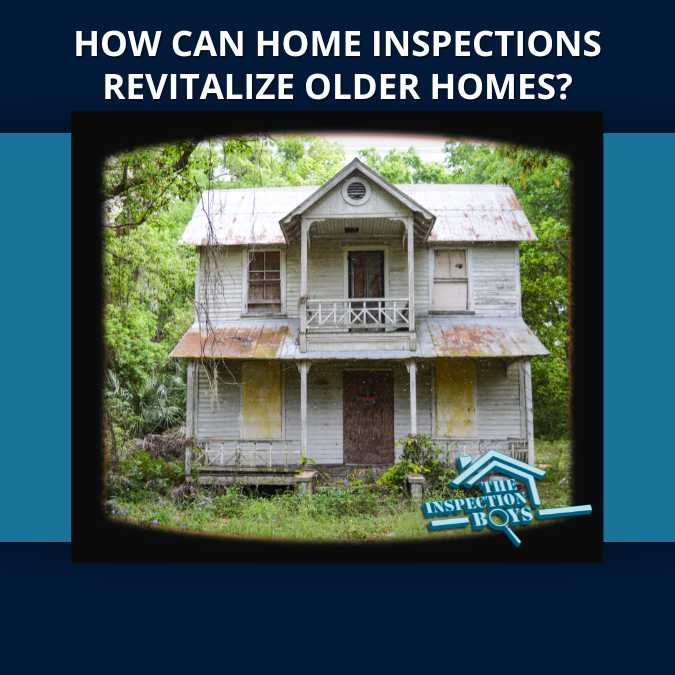The allure of older homes is undeniable. Often boasting architectural details and craftsmanship rarely seen today, they ooze character and history. However, these vintage beauties can also come with hidden challenges. Modern homeowners seeking energy efficiency, safety, and comfort often need to consider retrofitting their older homes. This process, while rewarding, requires careful planning and execution. Here, we explore the challenges associated with inspecting older homes and outline best practices for recommending upgrades.
Challenges of Inspecting Older Homes
Hidden Hazards: Building codes and materials have evolved significantly over time. Licensed home inspectors must be extra vigilant for potential dangers like outdated wiring, lead paint, asbestos-containing materials, and faulty plumbing. Additionally, hidden structural issues may lurk behind walls or beneath floors.
Lack of Documentation: Unlike newer construction with readily available blueprints and permits, older homes might lack detailed documentation. This makes it more challenging for home inspectors to assess renovations done over the years and identify potential issues introduced by previous work.
Accessibility Issues: Older homes may have smaller crawl spaces, attics, and hidden compartments. Inspecting these areas can be physically demanding and require specialized equipment for proper assessment.
Material Mystery: Building materials used in older homes may be unfamiliar to modern inspectors. Identifying unknown materials and assessing their safety and performance requires additional research and expertise.
Best Practices for Recommending Upgrades
Prioritize Safety: Safety should be the primary focus of any retrofitting project. This includes addressing potential electrical hazards, testing for lead and asbestos, ensuring structural integrity, and upgrading outdated plumbing systems.
Respect the Character: While upgrades are necessary for functionality, respect for the home’s original character is crucial. Modernizing electrical systems or installing energy-efficient windows can be done without sacrificing the home’s architectural style.
Energy Efficiency Audit: Modernizing insulation, windows, and appliances can significantly improve energy efficiency and save money on utility bills. Conducting a thorough energy audit can pinpoint areas for improvement and recommend cost-effective upgrades.
Phased Approach: Retrofitting an older home is often a multi-step process. A phased approach, prioritizing essential upgrades and budgeting for future improvements, can make the project more manageable.
Collaboration is Key: A successful retrofitting project requires collaboration between the homeowner, home inspection services, contractor, and potentially an architect or historical preservation specialist. Open communication ensures everyone is on the same page, and the project stays within budget and respects the home’s character.
Technology to the Rescue
Modern technology offers valuable tools for licensed home inspectors and homeowners during a retrofitting project.
Thermal Imaging: These cameras can detect hidden moisture issues behind walls or identify potential electrical problems.
Structural Analysis Tools: Advanced software and equipment can help assess the structural integrity of older homes and identify potential weak points.
Building Information Modeling (BIM): Creating a digital model of the home can be beneficial for planning renovations and visualizing potential challenges.
Retrofitting an older home blends history with modern comfort. By acknowledging the challenges, employing best practices, and embracing the possibilities of technology, homeowners can breathe new life into their vintage treasures while ensuring safety, efficiency, and long-lasting enjoyment.

